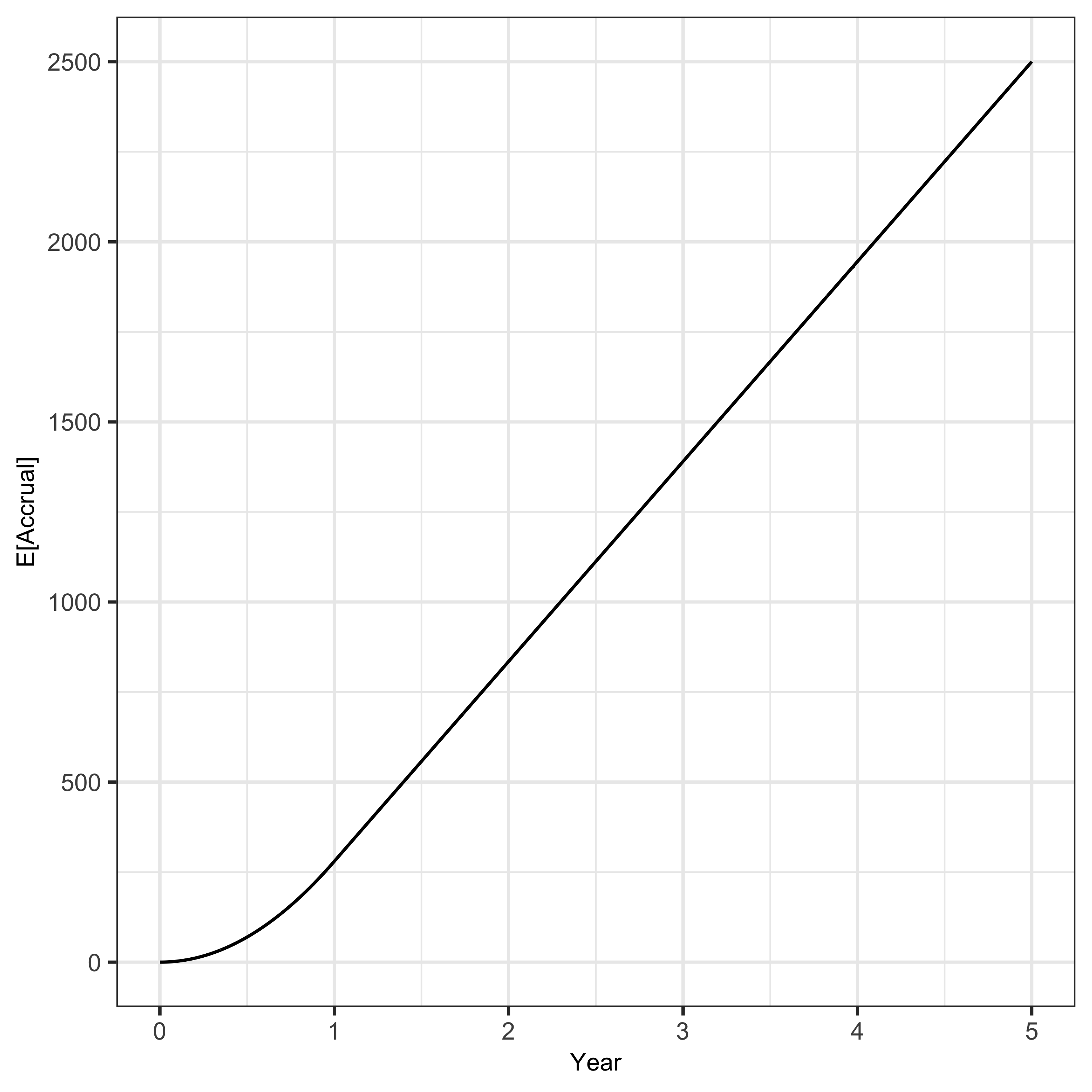Simulation setup
Various aspects of the initial conditions for the simulations are described.
Baseline response
The baseline probability/log-odds of treatment success is assumed to vary by silo and site of infection as detailed below.
| Silo | Joint | Pr(trt success) | log-odds |
|---|---|---|---|
| early | knee | 0.65 | 0.62 |
| early | hip | 0.75 | 1.10 |
| late | knee | 0.55 | 0.20 |
| late | hip | 0.6 | 0.41 |
| chronic | knee | 0.6 | 0.41 |
| chronic | hip | 0.65 | 0.62 |
Accrual
Accrual is assumed to follow a non-homogeneous Poisson process event times with ramp up over the first 12 months of enrolment and then enrolment of around 1.5 per day.
Code
# events per day
lambda = 1.52
# ramp up over 12 months
rho = function(t) pmin(t/360, 1)
d_fig <- data.table(
t = 0:(5 * 365),
# expected number enrolled
n = c(0, nhpp.mean(lambda, rho, t1 = 5 * 365, num.points = 5 * 365))
)
ggplot(d_fig, aes(x = t/365, y = n)) +
geom_line() +
scale_x_continuous("Year") +
scale_y_continuous("E[Accrual]", breaks = seq(0, 2500, by = 500))
Domain non-membership effects
We assume a small effects for not being randomised to a domain for all domains.
Missingness
Missingness is not implemented.
Non-differential follow-up
To avoid artifacts associated with non-differential follow-up (e.g. early vs late deaths), participants will be included in the analyses only when they reach the primary endpoints (12 months) irrespective of whether they experienced treatment failure before that time.